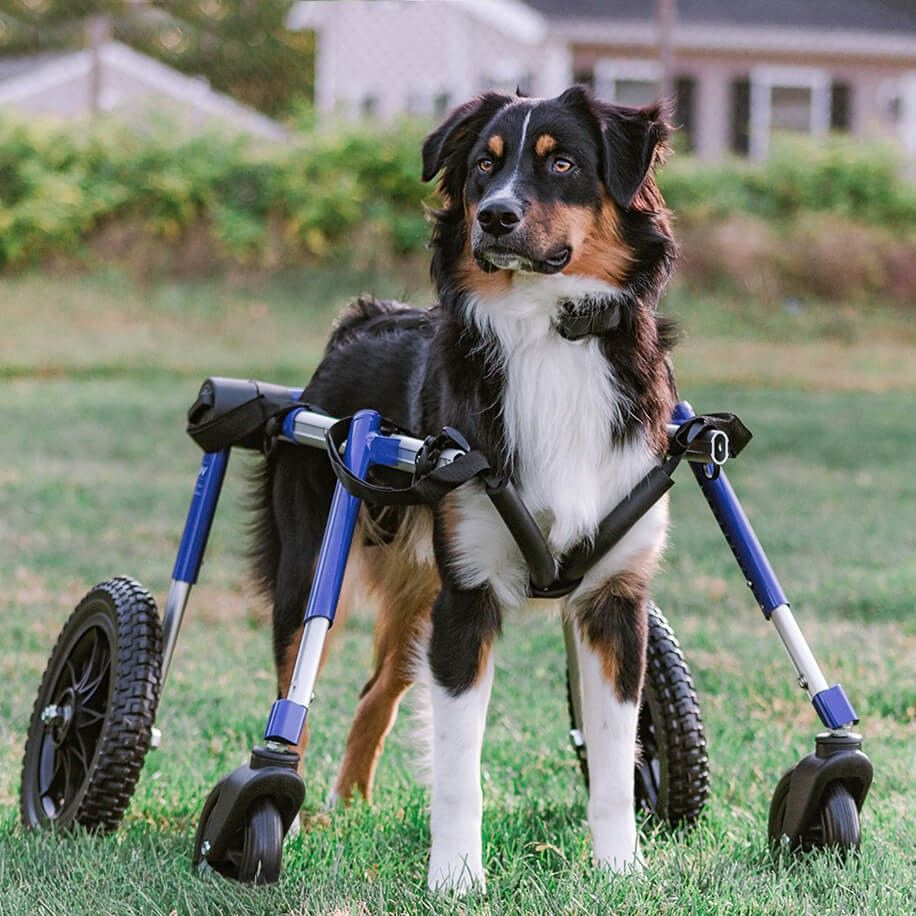Beagle Lifespan: How Long Do Beagles Live? (Life Expectancy)

Dog Wheelchair Myths Debunked: Separating Fact from Fiction
There is a lot of information available on dog wheelchairs, but there are also quite a few misconceptions and dog wheelchair myths out there too. Let's separate fact from fiction and learn the benefits and the true ways a dog wheelchair can help your pet.
The Truth About Dog Wheelchairs
1. Dogs Do Not Have to Be Paralyzed to Use a Wheelchair

A common misconception is that only a completely paralyzed dog can benefit from using a dog wheelchair, which is simply not true. There are many different reasons why a dog may need a wheelchair, including:
- Difficulty maintaining their balance
- Tiring easily on long walks
- Muscle loss in the back leg
- Aching joints from arthritis or hip dysplasia
- Rear leg weakness
- Unsteady gait or swaying
- Reduce the amount of pressure on an acl or ccl injury
- Trauma or injury recovery
- Recovering after surgery
- Mobility problems
Yes, many paralyzed dogs use a wheelchair, but many pets can still walk and rely on a wheelchair to help them stay active. Your dog can still use a wheelchair and walk on all four legs. Continued mobility will prevent muscle atrophy and allow the dog to maintain the leg strength they do have.
2. Dog Wheelchairs Will Not Make Your Dog "Lazy"
Dogs want to be active, and their wheelchair can help them do that. Dogs who can't walk on their own become depressed, and their wheelchair allows them to walk again. Canine mobility carts help pets enjoy life and extend their time with their families. Most wheelie dogs take to their wheelchairs immediately and become more active than they’ve been in years.
Just because your dog relies on a wheelchair does not mean they are no longer using their legs. Pets who still maintain the use of their back legs can continue to walk on all four legs and exercise their back legs while using a wheelchair. A wheelchair encourages dogs to use their legs and makes it easier for them to build strength. Dog wheelchairs are designed to help pets get the exercise they need. Many pet professionals recommend using a wheelchair to enhance a pet’s rehab sessions. The Walkin’ Wheels wheelchair is lightweight, gives optimal support in the right places, and allows pets to actively use and exercise their muscles. They are helping pets to increase their strength and stamina.
3. Dogs of ALL Ages and Sizes Use Wheelchairs

Dog wheelchairs are for big dogs and small dogs too! There are carts available to fit every size dog breed, from toy breeds all the way up to giant breeds. With four different wheelchair frame sizes, the Walkin' Wheels adjustable wheelchair will fit dogs as small as 2lbs. up to 180 lbs.
Your dog's age doesn't matter, either. Although many elderly pets benefit from a wheelchair, pets of any age can struggle with mobility. Senior dogs are more likely to suffer from joint pain or a degenerative condition that impacts their leg strength. A younger dog could need a wheelchair temporarily as they heal from an injury or if they were born unable to use their back legs. Regardless of a pet's size, weight, or age, a dog wheelchair is a great way to help your dog walk.
4. Wheelchairs Help Dogs Walk Again
It’s often wrongly assumed that once a dog gets a wheelchair, it will never walk again, which isn’t true. Many pets use a wheelchair for short-term rehabilitative use as they heal. A wheelchair is often an integral part of their rehabilitation. A dog’s wheels can be used during hydrotherapy sessions, structured exercises, and during their daily walk to help increase strength in their back legs. The support they receive from the wheelchair makes mobility more accessible and helps to prevent muscle atrophy as the dog works to build up muscle mass. With time, patience, exercise, and the support of their Walkin’ Wheels, the dog may regain use of their back legs.
5. Wheelchairs are More Than an "End of the Road" Option
A wheelchair isn't a last-chance option at the tail end of a dog's life. Too often, we hear "I wish I hadn't waited so long" or "I didn't realize how much this would help". Many pet parents hold themselves back from getting their dog a wheelchair because they don't think their dog needs it "yet" or they "aren't quite ready". The truth is that many dogs can benefit from a wheelchair and early adoption of a cart can help to improve a pet's quality of life. Don't wait, giving a dog the freedom to be their active self will allow them to enjoy every minute. Talk to your veterinarian about dog wheelchairs, if your pet is showing signs of mobility struggles it might be time to consider a cart.
6. Loss of Mobility Doesn't Have to Be an End of Life Decision
When a pet is dealing with paralysis or mobility loss, it can feel like you don’t have options, but that’s not the case. An inability to walk or stand on their own doesn’t mean their quality of life is diminished. Canine mobility assistance is available to keep your best friend walking, running, and living their best life!












